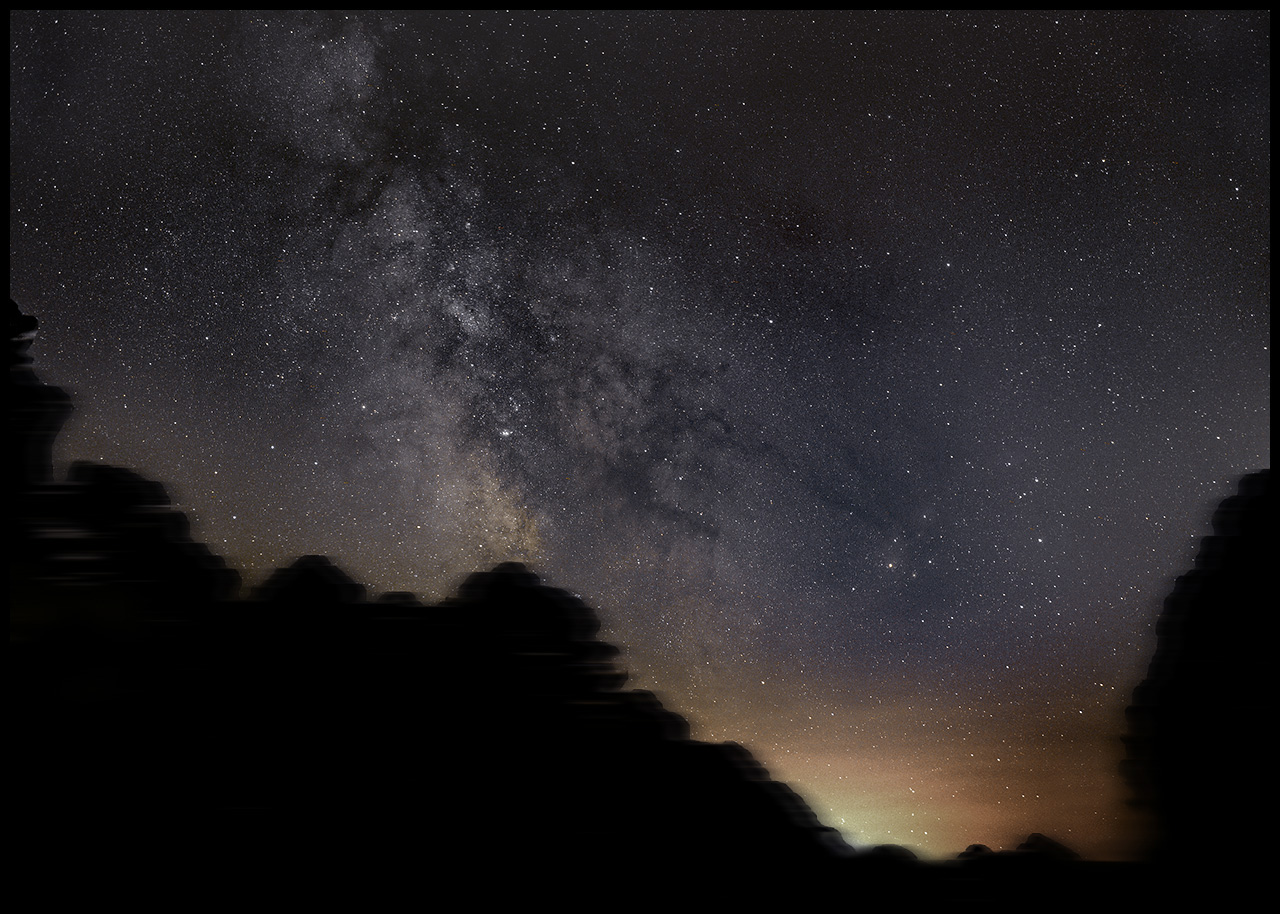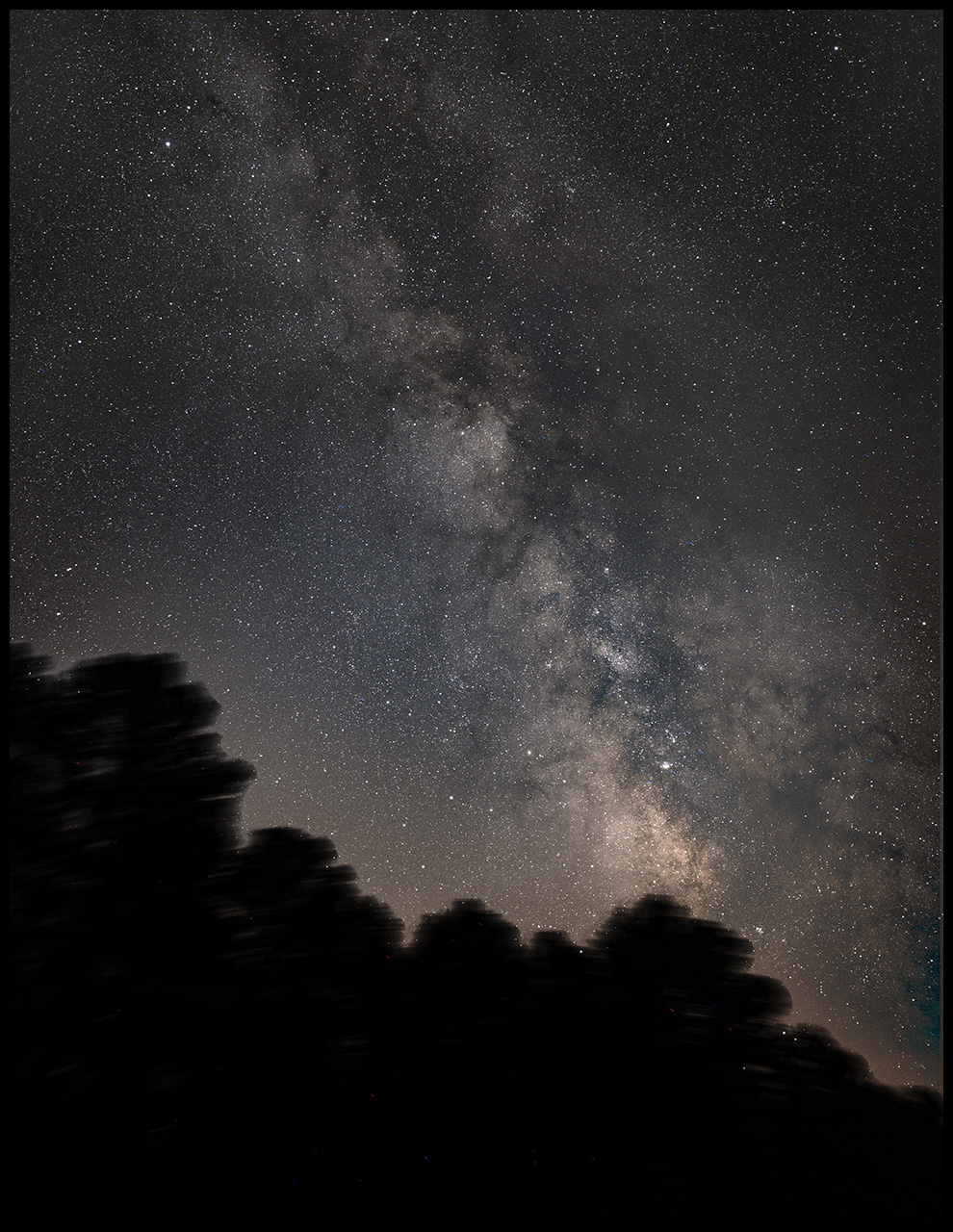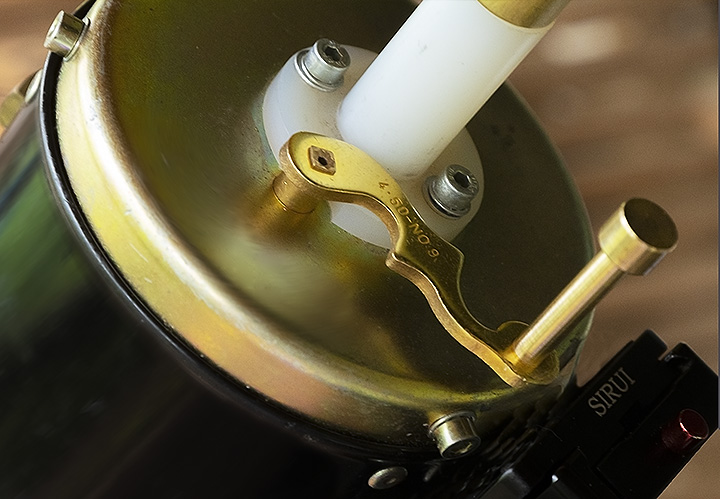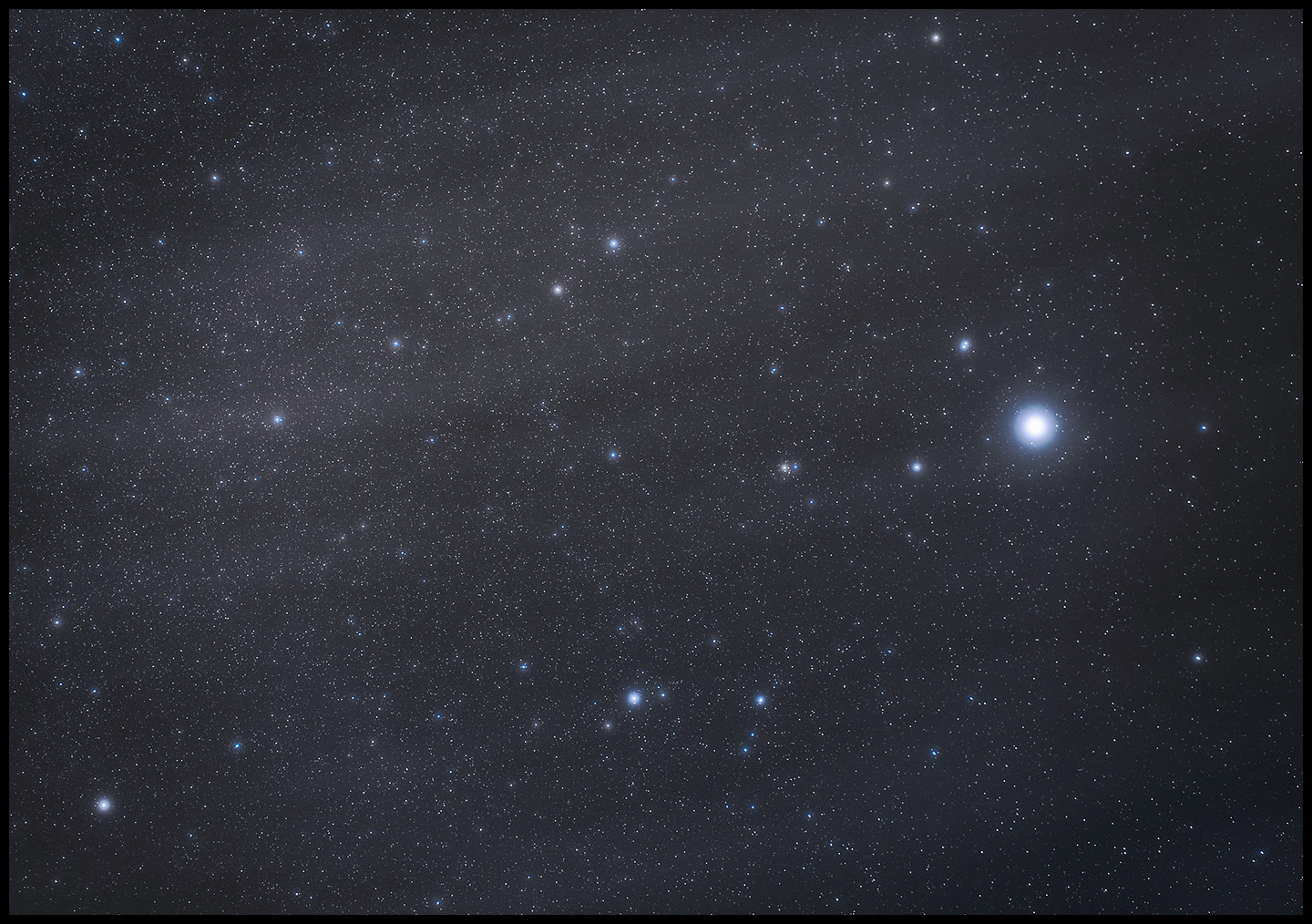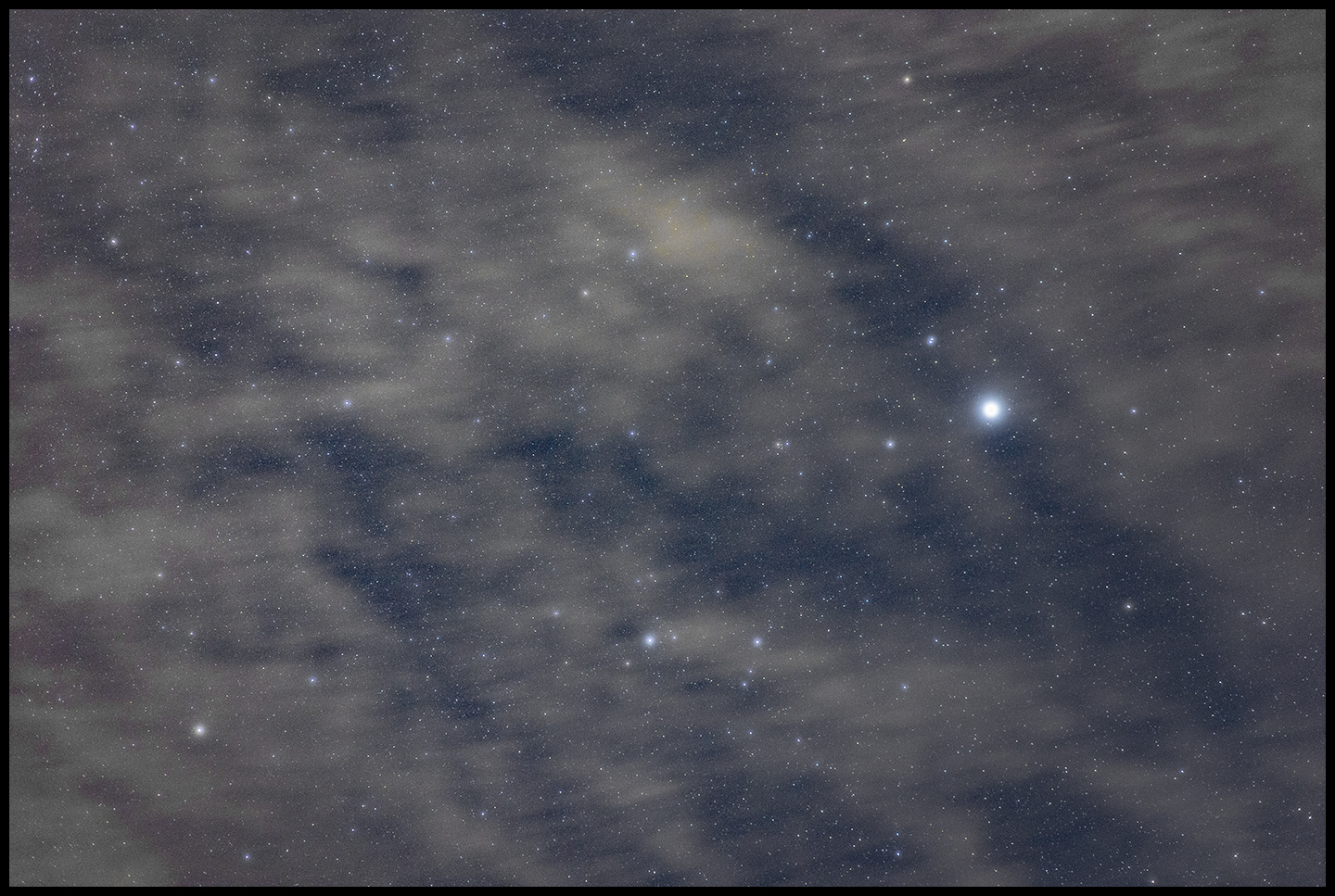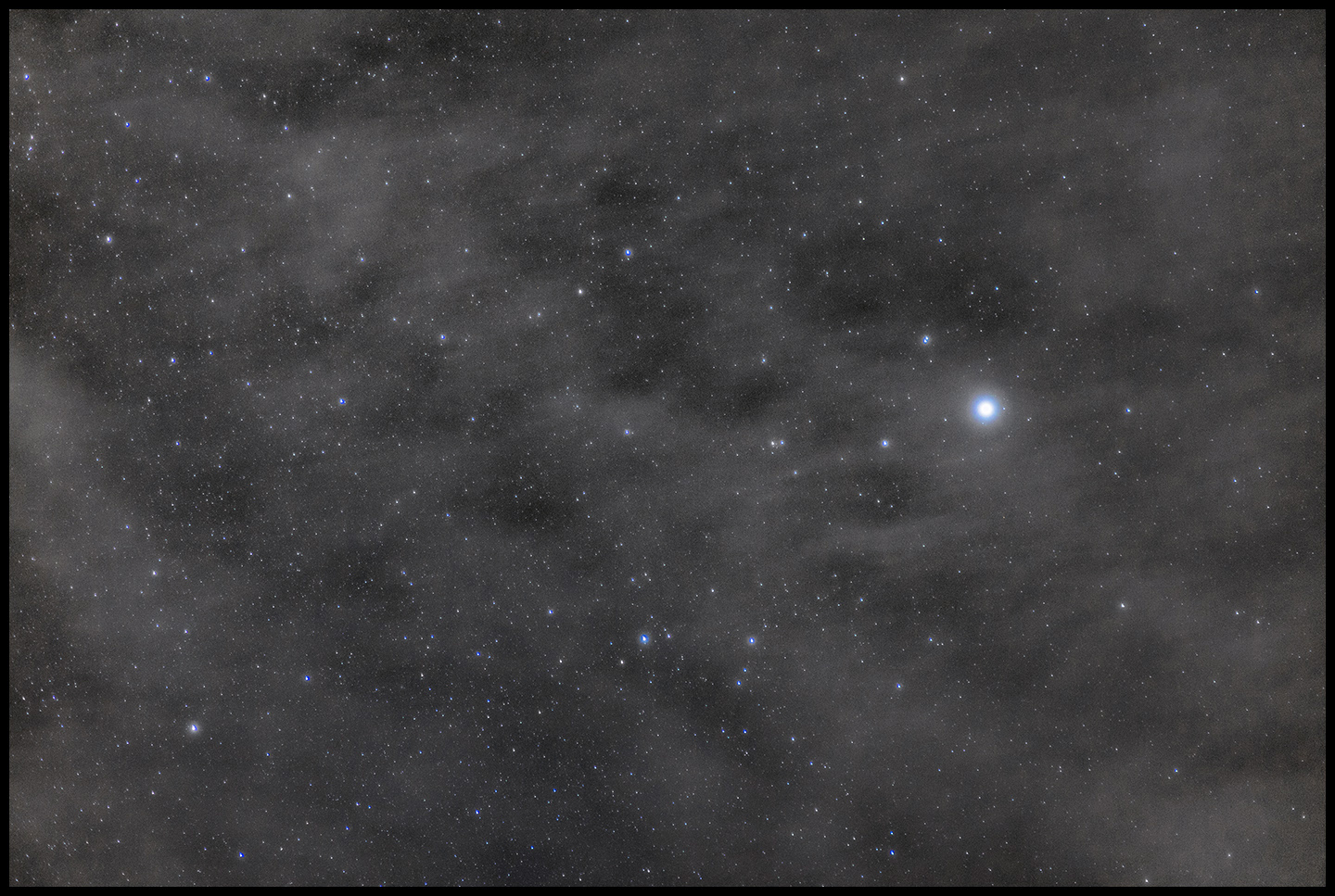The Starry Night, 225 :: home :: |
Steampunk Astronomy, part 2Most camera trackers are electronic now, some with integrated circuits and computer control, but a spring-driven movement powers the Purus Astromechanik. From the beginning, the Purus had a retro feel (it was made from the 1970s until at least 1995). The Purus returned the “clock” to “clock-drive,” a venerable term of art for any motor turning the polar axis of an equatorial telescope mount. Before servo motors, stepper motors, DC motors, and AC synchronous motors, ticking spring- and weight-driven clocks compensated for the spinning of the Earth. The ruby-jeweled movement in the Purus left the watchmaker intended for a mantel or desktop clock, but its distinguishing feature suited it for other uses. An unusually robust balance wheel transfers enough torque from the spring to the shaft to turn a camera and lens rather than just feather-weight clock hands.
For Purivox, as for most companies serving the amateur astronomy niche, making products for stargazers was a side gig reflecting the owner’s enthusiasms more than market realities. Remember that Scott Losmandy’s Hollywood General Machining makes a telescope mount so popular that it has defined its own ecosystem, but the company makes its payroll from dollies, tracks, and motion-control systems for Hollywood cinematographers — precise movement of cameras and lenses being the common theme. The connection between Purivox’s bread and butter and the Purus offered by their now-defunct subsidiary Purus-Astromechanik is not quite so direct.
Purivox Vogelabwehr Purivox made — makes — “bird scarers” designed to motivate birds to leave vineyards, orchards, croplands, and airports, to vacate any place where birds gather to the detriment of human ambition. It’s literally a booming business: at its heart are propane-fueled cannons that fire deafening blasts at irregular intervals — hence the sky-directed blunderbuss of the corporate logo. The Purivox line has expanded to address particular species (blackbirds, jackdaws, geese, cormorants, crows, cranes, seagulls, herons, woodpeckers, starlings, and pigeons) and other families (deer, wild boar, and voles). Devices include the canonical cannon as well as lasers, scarecrows, and kites shaped to resemble hawks and falcons. From the 1970s until at least 1995, Purivox also made the Purus-Astromechanik. Purivox’s headquarters are in Ottersheim (“a small local village in Rhineland-Palatinate” --Wikipedia) with regional offices in multiple countries on every continent save one (penguins remain unalarmed). The well-worn pamphlet that came with my astronmomical mantel clock is a word-for-word translation of the original German; mine came from Escalon, California, a small local village north of Modesto, in or about 1991. In Purivox’s “legacy” products, a robust clock movement spun a switch at a rate of one revolution per day. During each revolution, the switch connected a series of relays. At each contact, the completed circuit sparked a propane charge in an attached cannon. The path from bird scarer to star tracker is conceptually straight: replace the contact arm with a camera mount, aim the drive shaft toward the north star, and voila! You have the "Purus" --literally "pure" -- from Purus-Astromechanik. Bird scarers and star trackers have evolved along parallel paths. Explosions at irregular intervals scare birds more than regularly timed detonations do, and circuits can deliver randomness more readily than gear trains can. Precision, durability, and adjustability all come more easily, more economically, to electronics than to mechanical pieces. Wifi, programmability, and remote control matter to many whose interests align inversely with the dining habits of birds. Modern bird scarers, like modern astronomical mounts, are thoroughly electric with embedded computers, but they both began with clockwork. In the case of bird scarers, this clockwork. The movement runs for a week on a single winding. That is fine for clocks and faux artillery protecting vineyards and orchards, but it is longer than any astronomer needs and can be inconvenient for travelers. There is no “off” button. These days, a softly ticking cannister will get a lot of interest at a star party; it will get more at an airport. Damnit. Two of these shortcuts have evaporated within six months. Stay tuned while I find and update the next few links. Discussion, in German, of maker, movements and design issues. A watchmaker looks inside a similar but not identical Purus. Die Himmelspolizey, Jan 2011, see pp 20-21 for another fan of the clock.
Samples, Uhrwerknachführung für die Himmelsphotographie ("Clockwork tracking for celestial photography")
6x30s F2.8, 25mm Zeiss
12x30s F2.8, 25mm Zeiss
An ornate #9 winder from the breaking yards
Notes from night two. (1) Arrange the tripod so that one leg points north. When the drive shaft and ball head are loaded with a reasonably heavy camera and lens, the whole kit can be tippy in the northerly direction. (2) The directions are sometimes spot on; don't be surprised to find a minute or two of slack in the gear train after reorienting the camera. (3) It does matter to keep the cg on the west side of the meridian. Let the mechanism arrest the camera's slow descent rather than relying on the machinery for heavy lifting. I got 12 out of 12 useful frames for one of the photos above, only 6 out of 10 for the other. Guess which effort respected this point.
8/05/2022. Let's try the 85mm lens. The Rokinon F1.4 AF lens in the Canon EF mount actually weighs a little less than the 25mm F2.0 Zeiss Distagon (485 vs 570 grams), but a little over three times the focal length means a little over three times the demands on the tracker. I've reduced exposures to 15 seconds from 30, which cuts the new challenge in half, closed down to F2.0 in the interests of ease of focus and even field illimination, and turned the kit loose on Lyra under a mostly cloudy sky. When I began, I neglected point 3 above and recognized my error when the clock stopped ticking. I shifted the camera to the west side of the driven axis and started again. It took a solid 18 frames before stars became round. That's four and a half minutes! The good news is that once they got round, they stayed round. Understand that it was usually so cloudy that only Vega was routinely visible.
85mm F1.4 Samyang/Rokinon at F2.0
M57 and M56 can both be located in the original frames, but, of course, they are really tiny at the scale provided by the 85mm lens. FWIW, that's Albireo in the lower left corner. Here are a couple of single frames from this sequence with different color grading. These are more indicative of the accuracy of the tracking (and I think I prefer them on aesthetic grounds to the stack in this instance, too).
An advertisement and some notes. This ad is from December 1995. It was reproduced in an article in Die Himmelspolizey for January 2011. The author notes that at that time Purivox could still supply many parts for replacement or repair.
Google translation, slightly spiffed: "Photograph stars, razor sharp, without line traces. The Purus-tracker makes it possible without electricity, without battery. Ideal for travelling, ideal for beginners." Note that in 1995, 270 DM was equivalent to about US $175.
:: top ::
|
© 2021, David Cortner
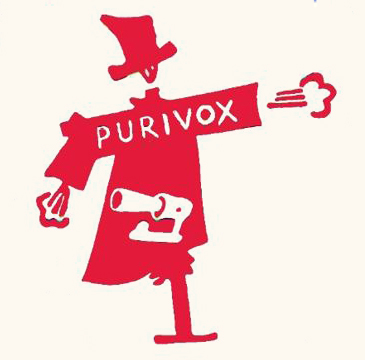 The Purus arrived under the stars by way of the vineyards of the Rhine valley. Purivox's logo was — is — a stylized red scarecrow, one arm slightly elevated with what looks like a puff of smoke exploding from its outstretched hand. On close inspection, the appendage looks more like a blunderbuss firing at the sky than a scarecrow’s arm pointing the way to Oz.
The Purus arrived under the stars by way of the vineyards of the Rhine valley. Purivox's logo was — is — a stylized red scarecrow, one arm slightly elevated with what looks like a puff of smoke exploding from its outstretched hand. On close inspection, the appendage looks more like a blunderbuss firing at the sky than a scarecrow’s arm pointing the way to Oz.